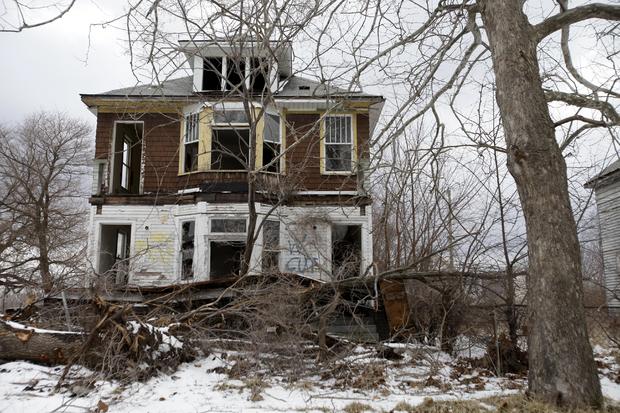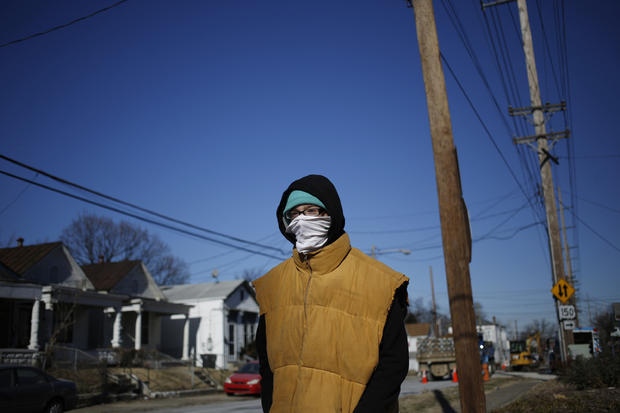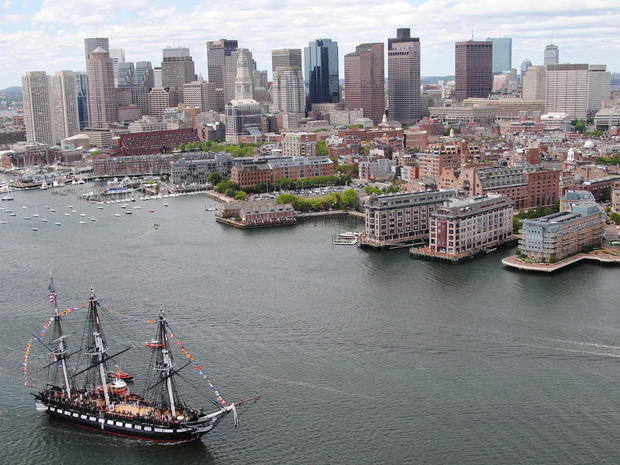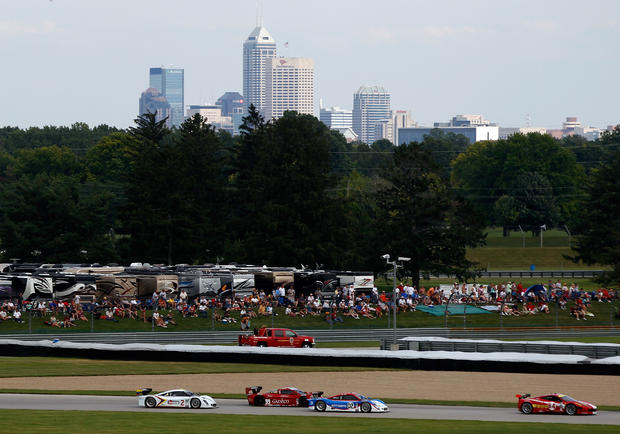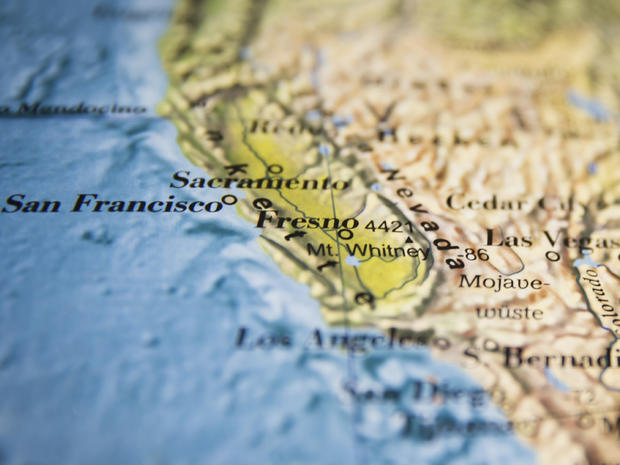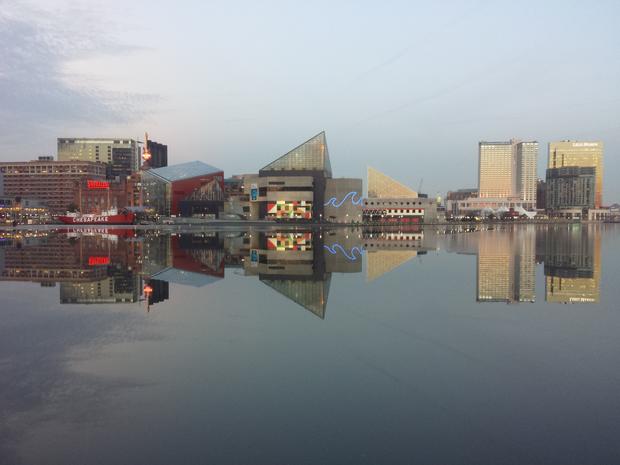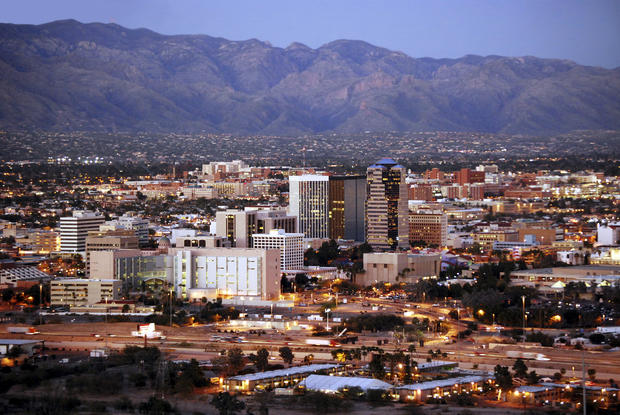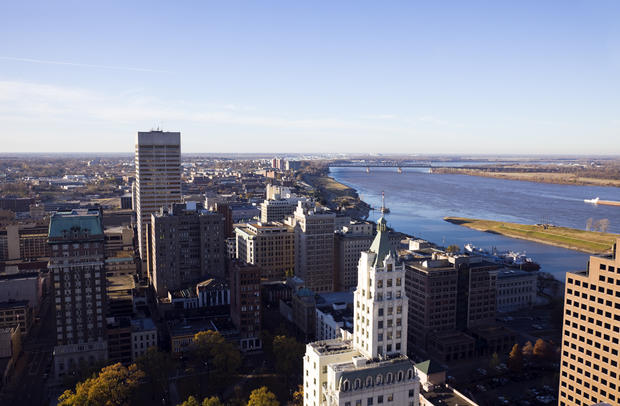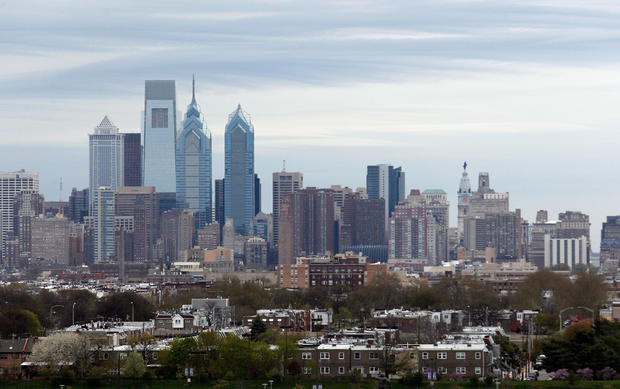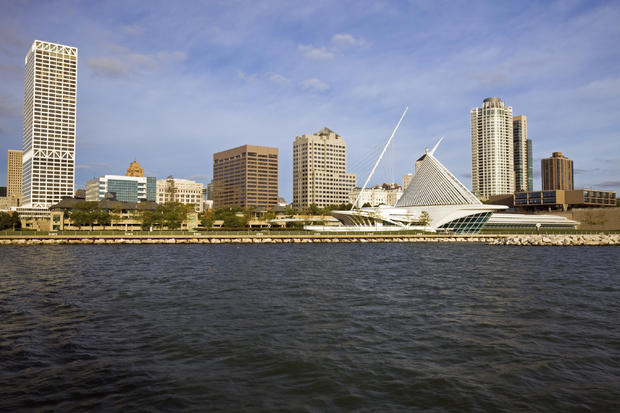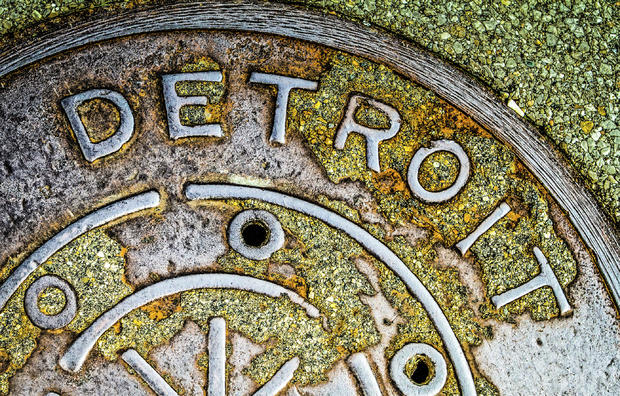America's 11 poorest cities
For all its apparent conveniences and perks, city living has never been easy or inexpensive. And income inequality is often most obvious in metropolitan areas.
U.S. Census Bureau data, cited by the Brookings Institution, found that the 50 largest American cities had significantly higher income gaps between rich and poor when compared to cities overall.
And in December, the Census Bureau released its Five-Year American Community Survey (ACS). It aims to assist in the annual distribution of over $400 billion in federal and state funds to communities across the country while supplying those districts with data they need to help plan municipal investments and services.
A California-based online research group, FindTheBest.com, used that ACS data to compile a list of the nation's 33 poorest cities.
Here are the 11 poorest cities on that list.
11. Louisville, Kentucky
- Percentage of incomes under $25,000: 29%
- Percentage of population with bachelor's degree: 26.9%
- Percentage of incomes over $150,000: 6.4% (#23, tied with Baltimore)
- Total population: 601,611
Poverty is a statewide issue in Kentucky, where close to one-fifth of residents, or about 800,000 people, are considered poor. Kentucky's largest city, Louisville, has been coping with decades of lost manufacturing jobs, deindustrialization and economic upheaval. Even before the Great Recession, the city's West Louisville community was considered one of the most economically depressed urban neighborhoods in the nation.
But efforts are underway to turn those figures around. A 10-year community program called 55,000 Degrees has a goal of ensuring that half the city's working-age adults have college degrees -- and with those degrees, access to better-paying employment -- by 2020.
10. Boston, Massachusetts
- Percentage of incomes under $25,000: 29%
- Percentage of population with bachelor's degree: 43.9%
- Percentage of incomes over $150,000: 13% (#6)
- Total population: 629,182
Boston's poverty rate remains below the national average. But the city has been dealing with rising poverty since the start of the recession, a situation that has strained municipal governments and has gotten worse in many of the city's poorest neighborhoods.
While the metro region's overall unemployment rate is dropping, Boston has one of the highest income inequality gaps and cost of living averages in the nation. A 2012 study by University of Massachusetts looked at the ACS five-year estimates for 2005-2009 and found that over 40 percent of Boston-area workers earned what it defined as a "low wage" of less than $30,600 annually.
9. Indianapolis, Indiana
- Percentage of incomes under $25,000: 29.1%
- Percentage of population with bachelor's degree: 27.3%
- Percentage of incomes over $150,000: 5.2% (#29, tied with El Paso, Texas)
- Total population: 828,841
The recession hit Indianapolis hard. The Annie E. Casey Foundation said the city saw one of the nation's largest increases between 2005 and 2013 in the percentage of children living in poverty. The Brookings Institution says Indianapolis was also among the top 10 U.S. cities with the largest increases in income inequality in recent years. Indianapolis also ranked near the bottom in a Harvard/UC Berkeley economic study of upward income mobility in America's 50 biggest metro regions.
8. El Paso, Texas
- Percentage of incomes under $25,000: 30.7%
- Percentage of population with bachelor's degree: 22.7%
- Percentage of incomes over $150,000: 5.2% (#28, tied with Indianapolis)
- Total population: 660,795
Education and low wages are two of the biggest economic issues in this border city. The U.S. Census Bureau notes only 74 percent of El Paso residents ages 25 and older have a high school degree or the equivalent, compared to the national average of 85 percent. And lower levels of education often equal lower earning power. According to a recent Forbes survey of 100 metropolitan areas where people earn the biggest and smallest paychecks, El Paso was ranked 97, with median starting salaries of $39,600 and an overall median salary of just under $47,000.
7. Fresno, California
- Percentage of incomes under $25,000: 31.4%
- Percentage of population with bachelor's degree: 20.3%
- Percentage of incomes over $150,000: 6.1% (#25, tied with San Antonio)
- Total population: 500,819
Like many other communities in California's Central Valley, Fresno is dependent on agriculture sector jobs and low-paying farm work.
"It's a pretty ag-heavy region, so the inequality of wages and the opportunity to earn better wages is really skewed," Caroline Farrell, executive director of the Center on Race, Poverty & the Environment, told the Associated Press back in 2012. "If you own a farm, you're apt to earn more wealth, while if you're a farm worker, don't earn very much." That lack of economic diversity also keeps away many people looking for better-paying work.
6. Baltimore, Maryland
- Percentage of incomes under $25,000: 33.2%
- Percentage of population with bachelor's degree: 26.8%
- Percentage of incomes over $150,000: 6.4% (#22, tied with Louisville, Kentucky)
- Total population: 621,445
Another city hit hard by the recession is Baltimore, whose unemployment rate stood at nearly 10 percent last summer. The city also is dealing with a relatively high cost of living and a low job growth rate. Baltimore lost around 5 percent of its population between 2000 and 2010, as people went elsewhere for work. And experts say many of the city's residents who were once getting by economically have fallen below the poverty line.
"The poor are everywhere," Susan Roll, professor at the University of Maryland School of Social Work, told the Baltimore Sun several years ago. "They're not just people living in shelters. They're the person who poured your coffee. ... They're cleaning your office when you're not there."
5. Tucson, Arizona
- Percentage of incomes under $25,000: 34.8%
- Percentage of population with bachelor's degree: 24.7%
- Percentage of incomes over $150,000: 3.3% (#32)
- Total population: 523,278
High unemployment and slow economic growth have hindered Tucson's recovery from the recession. According to Arizona state government data, the city's jobless rate went from 3.6 percent at the end of 2007 to a high of 9.4 percent in 2010. And while that unemployment rate has improved, the region's tourism industry, a major employer, mostly generates low-wage jobs. At the same time, an overall downturn in Tucson's housing market and construction industry continues to handicap its economic growth.
"The growth has not been as great as we would like to see it," Art Burrola, who runs a veterans' job placement and training program, told the Arizona Daily Star in 2013. "But people -- after doing some training, some planning, some serious job searching -- they are getting employed here. Things are moving at a snail's pace, but we'll get there eventually."
4. Memphis, Tennessee
- Percentage of incomes under $25,000: 34.9%
- Percentage of population with bachelor's degree: 23.7%
- Percentage of incomes over $150,000: 4.8% (#30, tied with Columbus)
- Total population: 650,932
One of the worst unemployment rates for a major American city -- along with a shrinking tax base, urban blight and a high violent crime rate -- all attest to Memphis' economic problems.
A report by Elena Delavega at the University of Memphis noted the majority of Memphis' poor are black or Hispanic. The city's poverty rates for minorities are higher across every age category, compared to non-Hispanic whites. And she said nearly half of the city's children live below the poverty line.
"We need to support mothers," she told CBS affiliate WREG last year. "We need child care that is affordable. We need better public transportation."
Many of the poor in Memphis rely on public transportation to get them to jobs that, due to Tennessee's lack of a minimum wage, are 11 percent below the national average in minimum wage pay.
3. Philadelphia, Pennsylvania
- Percentage of incomes under $25,000: 36.4%
- Percentage of population with bachelor's degree: 23.9%
- Percentage of incomes over $150,000: 5.3% (#27)
- Total population: 1.54 million
Described by the Philadelphia Inquirer as "the poorest big city in America," The City of Brotherly Love has struggled with poverty for decades. Of America's 10 biggest cities, Philly also has what the Inquirer describes as the highest rate of deep poverty -- that is, people whose income is below half of the federal poverty level.
"Right now the single biggest predictor of how a child will do in life is the ZIP code in which they are born," Eva Gladstein, head of the city's Office of Community Empowerment, told CBS affiliate KYW Newsradio in November. "So there are communities with high need and less opportunity as compared to other neighborhoods."
2. Milwaukee, Wisconsin
- Percentage of incomes under $25,000: 36.5%
- Percentage of population with bachelor's degree: 22.1%
- Percentage of incomes over $150,000: 3.0% (#33)
- Total population: 596,459
The collapse of heavy industry and manufacturing in Milwaukee took decades and is still taking its toll on the city, which also saw its poverty rate jump to nearly 30 percent during the depths of the Great Recession.
"What's missing in our city is work, and the amount of idle people who aren't working is having consequences," Wyman Winston, executive director for Wisconsin's Housing and Economic Development Authority, told the Milwaukee Journal Sentinel in 2011.
1. Detroit, Michigan
- Percentage of incomes under $25,000: 48%
- Percentage of population with bachelor's degree: 12.7%
- Percentage of incomes over $150,000: 1.9% (#34)
- Total population: 706,663
The city's once-famous economic good fortune faded with the decline of the U.S. auto industry. In early 2014, Detroit became the largest U.S. city to ever declare bankruptcy. The city's current poverty rate is infamous. It has thousands of vacant or abandoned homes, and communities without the expected municipal services. Detroit even shut off water to thousands of customers who were delinquent on their water bills.
With the help of a plan to drop about around $7 billion of its $18 billion debt, the city exited bankruptcy last December.
